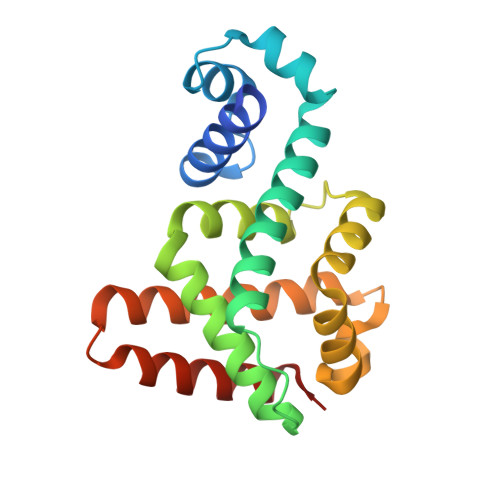Using fungible biosensors to evolve improved alkaloid biosyntheses.
d'Oelsnitz, S., Kim, W., Burkholder, N.T., Javanmardi, K., Thyer, R., Zhang, Y., Alper, H.S., Ellington, A.D.(2022) Nat Chem Biol 18: 981-989
- PubMed: 35799063
- DOI: https://doi.org/10.1038/s41589-022-01072-w
- Primary Citation of Related Structures:
7N4W, 7N4Z, 7N53, 7N54 - PubMed Abstract:
A key bottleneck in the microbial production of therapeutic plant metabolites is identifying enzymes that can improve yield. The facile identification of genetically encoded biosensors can overcome this limitation and become part of a general method for engineering scaled production. We have developed a combined screening and selection approach that quickly refines the affinities and specificities of generalist transcription factors; using RamR as a starting point, we evolve highly specific (>100-fold preference) and sensitive (half-maximum effective concentration (EC 50 ) < 30 μM) biosensors for the alkaloids tetrahydropapaverine, papaverine, glaucine, rotundine and noscapine. High-resolution structures reveal multiple evolutionary avenues for the malleable effector-binding site and the creation of new pockets for different chemical moieties. These sensors further enabled the evolution of a streamlined pathway for tetrahydropapaverine, a precursor to four modern pharmaceuticals, collapsing multiple methylation steps into a single evolved enzyme. Our methods for evolving biosensors enable the rapid engineering of pathways for therapeutic alkaloids.
Organizational Affiliation:
Department of Molecular Biosciences, University of Texas at Austin, Austin, TX, USA. simonsnitz@gmail.com.
















